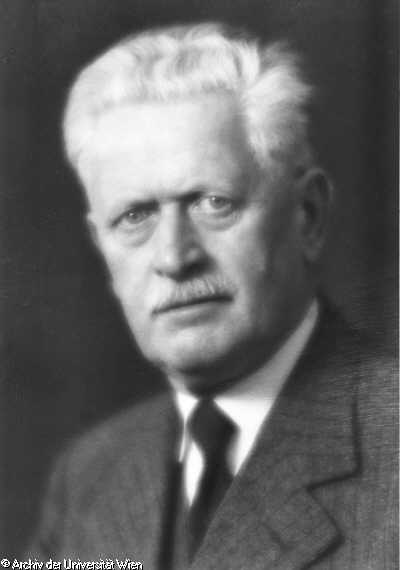Arthur Schüller (Schuller)
| Born: |
12-28-1874 |
| Faculty: |
Medical School | Medical University Vienna |
| Category: |
Expelled teacher |
Arthur SCHÜLLER (SCHULLER) (born on December 28
th, 1874 in Brünn/Moravia [Brno/Czech Republic], died on October 31
st, 1957 near Melbourne/Australia) was in 1938 private lecturer with the title of an extraordinary professor ("Pd. (tit.ao.Prof.)") for Neurology and Psychiatry at the Medical School of the University of Vienna.
He studied medicine at the University of Vienna and graduated Dr. of Medicine "sub auspiciis imperatoris" in 1899. Among his teachers was Guido Holzknecht. After his gradution Schüller worked at the Vienna General Hospital, since 1901 as aspirant to the II. Psychiatric Hospital headed by Richard Krafft-Ebing and later Julius Wagner-Jauregg. From 1905 he was head of the "Nervenabteilung" of the 1st public children's health institute in Vienna.
On December 9th, 1906 he married Margarethe Stiassni (1886-1972), their sons Franz and Hans were born in 1908 and 1909. The family lived in Vienna 9th district, Garnisongasse 7.
Artur Schüller gained his habilitation at the Medical School of the University of Vienna in 1907 in neurology and psychiatry (postdoctoral thesis: "
Röntgendiagnostik der Erkrankungen des Kopfes") and taught as a 'Privatdozent'. In 1914 he was awarded the title of an ao. Prof. for nervous and mental diseases, and received a lectureship in radiology of the skull. From 1908 he was head of the nerve department in the Franz Josef Ambulatorium in Vienna and also worked in the central X-ray Laboratory (
Zentral-Röntgenlabor) of the General Hospital under Guido Holzknecht.
Artur Schüller is considered the "father of neuroradiology". He published numerous papers on X-ray diagnosis of brain diseases and skull defects. The "Hand-Schuller-Christian disease" is named after him and others. In 1936 Schüller performed the first cisternography. He was a member of the Society of Physicians ('Gesellschaft der Ärzte') in Vienna and the Society of German Neurologists ('Gesellschaft der deutschen Nervenärzte').
He was persecuted in times of Nazism as a Jew lost his position and was thrown out of the university on April 22nd, 1938.
Together with his wife Artur Schüller was able to emigrate first to Oxford/England and in 1939 with the help of a former student to Melbourne/Australia. Their sons Franz and Hans Schüller were deported to the German concentration camp Auschwitz [Oświęcim/Poland], where they were murdered in 1943.
In exile in Australia Schüller continued his work as a radiologist. In his final years, until 1956, Dr. Schuller worked in the Radiology Department at St Vincent's Hospital Melbourne, Australia. In order to gain enough money for living, his wife Margarethe (née Stiassni) had to work as a cook in private households.
Prof. Dr. Artur Schüller (Schuller) died on October 31
st, 1957 in Heidelberg near Melbourne.
Lit.: information from his nephew Dr. Andrew L. Schuller, Australia, and Dr. Karin Schindler, Vienna 2015/16; BLUMESBERGER Vol. 3 2002, 1232; DEGENER 1935; EMOEDI/TEICHL 1937; Dietrich von ENGELHARDT, Hg., Biographische Enzyklopädie deutschsprachiger Mediziner. Vol. 2. München 2002, 564; www.geni.com; KILLY/VIERHAUS Vol. 9 1998; Alma KREUTER, Deutschsprachige Neurologen und Psychiater, Vol. 3, 1996; Kuerschners Gelehrtenkalender 1931; MERINSKY 1980, 243; MÜHLBERGER 1993; PLANER 1929; Erwin SCHINDLER, Arthur Schüller: Pioneer of Neuroradiology, in: American journal of Neuroradiology 18:1997, 1297–1302 [pdf]; UB MedUni Wien/van Swieten Blog; WININGER Vol. 7 1935; HENDERSON, J. K., & HENDERSON, M. A. (2021), Arthur Schüller: Founder of radiology. A life on two continents. Melbourne: Hybrid Publishers.
Katharina Kniefacz
